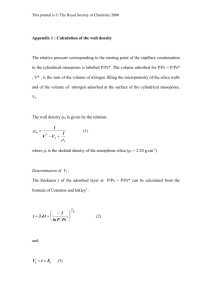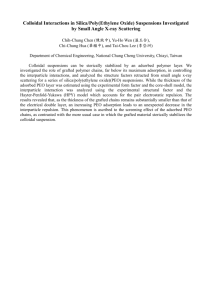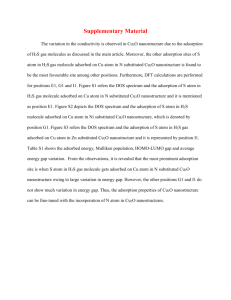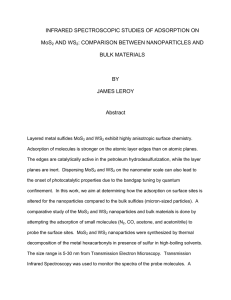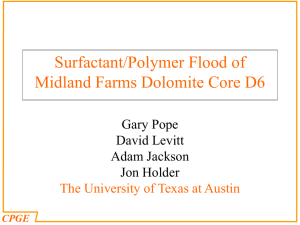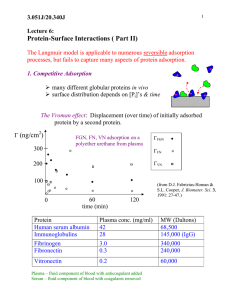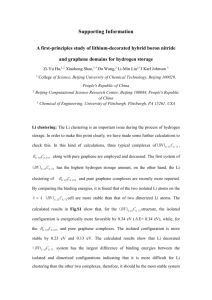The University of Oklahoma
advertisement
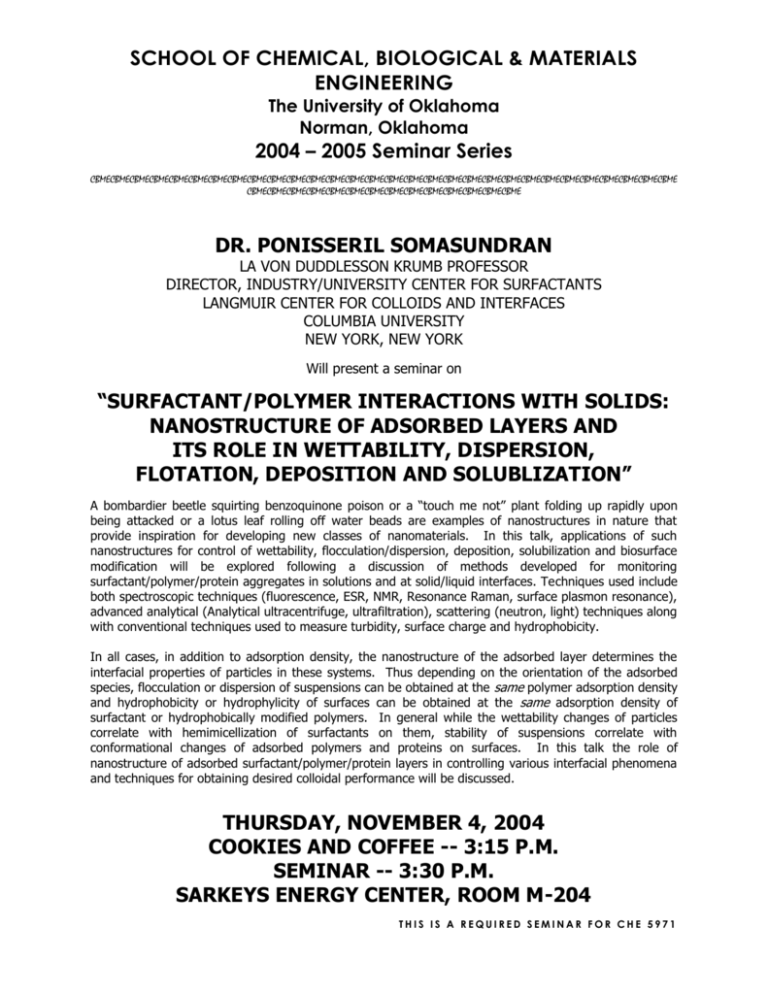
SCHOOL OF CHEMICAL, BIOLOGICAL & MATERIALS ENGINEERING The University of Oklahoma Norman, Oklahoma 2004 – 2005 Seminar Series CBMECBMECBMECBMECBMECBMECBMECBMECBMECBMECBMECBMECBMECBMECBMECBMECBMECBMECBMECBMECBMECBMECBMECBMECBMECBMECBMECBMECBMECBME CBMECBMECBMECBMECBMECBMECBMECBMECBMECBMECBMECBMECBMECBME DR. PONISSERIL SOMASUNDRAN LA VON DUDDLESSON KRUMB PROFESSOR DIRECTOR, INDUSTRY/UNIVERSITY CENTER FOR SURFACTANTS LANGMUIR CENTER FOR COLLOIDS AND INTERFACES COLUMBIA UNIVERSITY NEW YORK, NEW YORK Will present a seminar on “SURFACTANT/POLYMER INTERACTIONS WITH SOLIDS: NANOSTRUCTURE OF ADSORBED LAYERS AND ITS ROLE IN WETTABILITY, DISPERSION, FLOTATION, DEPOSITION AND SOLUBLIZATION” A bombardier beetle squirting benzoquinone poison or a “touch me not” plant folding up rapidly upon being attacked or a lotus leaf rolling off water beads are examples of nanostructures in nature that provide inspiration for developing new classes of nanomaterials. In this talk, applications of such nanostructures for control of wettability, flocculation/dispersion, deposition, solubilization and biosurface modification will be explored following a discussion of methods developed for monitoring surfactant/polymer/protein aggregates in solutions and at solid/liquid interfaces. Techniques used include both spectroscopic techniques (fluorescence, ESR, NMR, Resonance Raman, surface plasmon resonance), advanced analytical (Analytical ultracentrifuge, ultrafiltration), scattering (neutron, light) techniques along with conventional techniques used to measure turbidity, surface charge and hydrophobicity. In all cases, in addition to adsorption density, the nanostructure of the adsorbed layer determines the interfacial properties of particles in these systems. Thus depending on the orientation of the adsorbed species, flocculation or dispersion of suspensions can be obtained at the same polymer adsorption density and hydrophobicity or hydrophylicity of surfaces can be obtained at the same adsorption density of surfactant or hydrophobically modified polymers. In general while the wettability changes of particles correlate with hemimicellization of surfactants on them, stability of suspensions correlate with conformational changes of adsorbed polymers and proteins on surfaces. In this talk the role of nanostructure of adsorbed surfactant/polymer/protein layers in controlling various interfacial phenomena and techniques for obtaining desired colloidal performance will be discussed. THURSDAY, NOVEMBER 4, 2004 COOKIES AND COFFEE -- 3:15 P.M. SEMINAR -- 3:30 P.M. SARKEYS ENERGY CENTER, ROOM M-204 THIS IS A REQUIRED SEMINAR FOR CHE 5971
